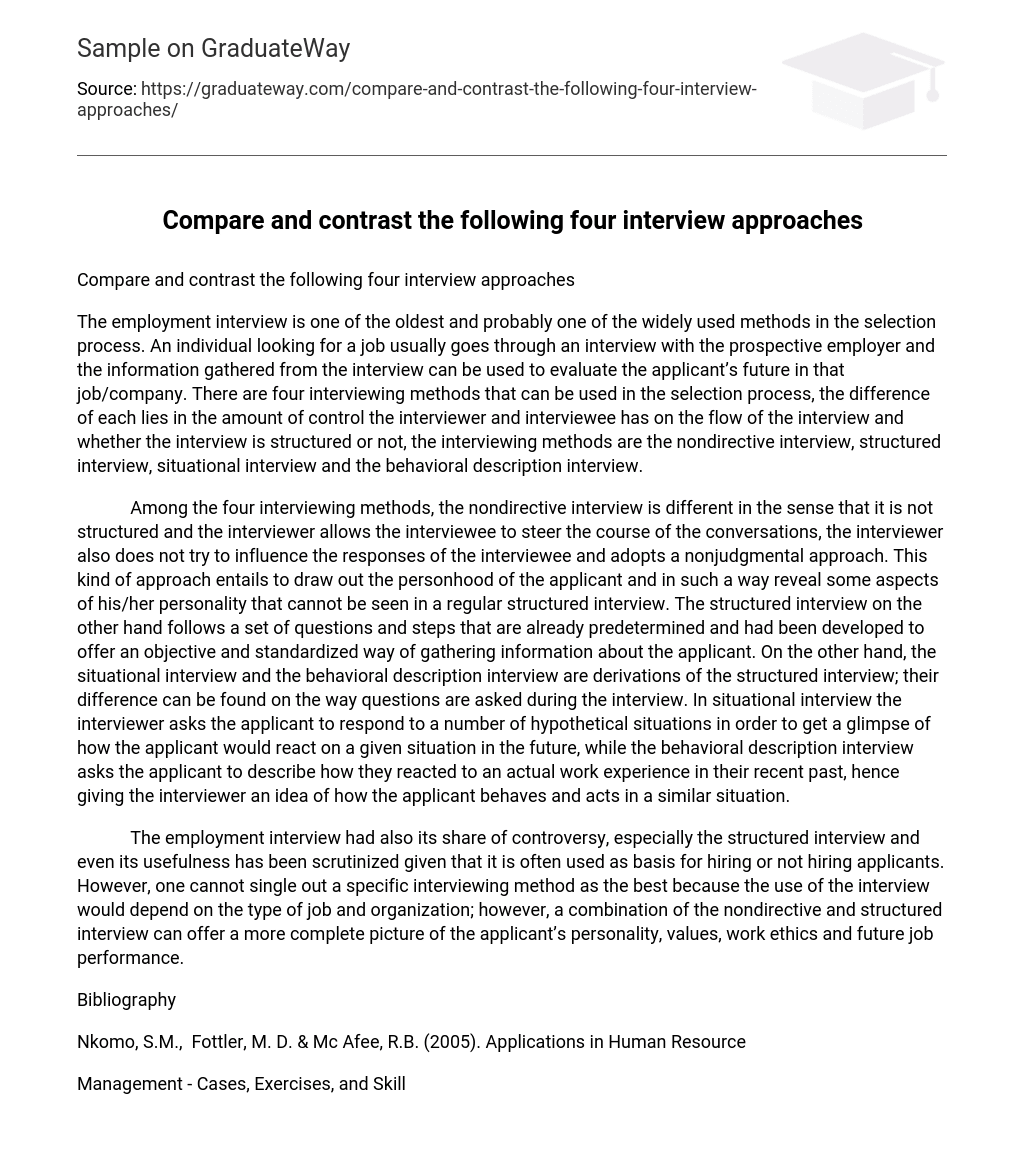The employment interview is one of the oldest and most widely used methods in the selection process. When an individual looks for a job, they usually go through an interview with the prospective employer. The information gathered from the interview can be used to evaluate the applicant’s future in that job/company. There are four interviewing methods that can be used in the selection process, each differing in terms of how much control both interviewer and interviewee have over the flow of conversation, as well as whether or not it is structured. These interviewing methods include: nondirective interviews, structured interviews, situational interviews, and behavioral description interviews.
Among the four interviewing methods, the nondirective interview is different in that it is not structured. The interviewer allows the interviewee to steer the course of the conversation and does not try to influence their responses, adopting a nonjudgmental approach. This approach draws out the personhood of the applicant and reveals aspects of their personality that cannot be seen in a regular structured interview.
The structured interview, on the other hand, follows a predetermined set of questions and steps developed to offer an objective and standardized way of gathering information about the applicant. The situational interview and behavioral description interview are derivations of this method.
In a situational interview, hypothetical situations are presented to gauge how an applicant would react in certain scenarios in future situations. In contrast, a behavioral description interview asks applicants to describe how they reacted during actual work experiences from their recent past. This provides insight into how they behave and act in similar situations.
The employment interview has also had its share of controversy, especially the structured interview. Even its usefulness has been scrutinized given that it is often used as the basis for hiring or not hiring applicants. However, one cannot single out a specific interviewing method as the best because the use of the interview would depend on the type of job and organization. A combination of nondirective and structured interviews can offer a more complete picture of the applicant’s personality, values, work ethics, and future job performance.
Bibliography.
Nkomo, S.M., Fottler, M.D., and McAfee, R.B. (2005) wrote about Applications in Human Resource.
Management: Cases, Exercises, and Skill Builders 5th edition for Business Higher Education.





